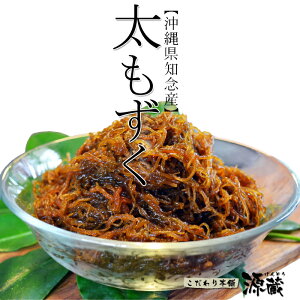【英語表記】
vinegared mozuku seaweed
食材と調味料と下ごしらえ
食材
| 塩もずく(塩抜きもずく) | |
| 生姜 | |
下ごしらえ
| 塩もずく | ①もずくをザルに入れ、流水でよく洗い流す(1分程度) ②ボウルに水を入れもずくを入れる(5~10分) ③もう一度、ザルに上げ流水で洗う (塩加減を常に気にしながらするとよい) ⑤塩抜き後は「もずく」の下ごしらえをする |
| もずく(塩抜き) | ①食べやすい長さに切る ②沸騰した湯にもずくを入れ、サッと湯通しする ③すぐに冷水に取り、冷ます ④冷めたらザルに上げて水気を切る |
| 生姜 | 良く洗い皮を剥く 針生姜にする (すりおろしてもよい) |
作り方
①出汁を作る
- 調味料をすべて入れる
- 火をかけ沸騰したら火を止める
- 冷ましておく
②もずくを出汁で洗う
- ①の出汁を少し取り出し、もずくを洗う
- ザルで漉す
(出汁で洗う事により、水っぽさがなくなる)
③もずくを出汁につける
- 残りの出汁に生姜を入れる
- 出汁に②で漉したもずくを入れる
- 軽く混ぜる
④冷やして保存
- そのまま、一晩寝かすことで味が落ち着く
ワンポイント
★もずく酢について
もずくを酢で味付けした料理。もずくの食感を生かし、酢は柔らかい味に仕上げる。そのために酢は火を入れ、カドを取ることがポイント。出汁は2つに分けて、2度漬けにすると味がボケない
★食材について
もずくには色々な種類があり、太さにより味を調整するとよい。塩もずくはしっかりと塩抜きする。盛り付けには胡瓜や茗荷、オクラ、とろろなどでもおいしい
失敗の原因と解決法
| 失敗 | 原因 | 解決方法 |
| 味が薄い | 水切り不足 調味料間違い | 不足している調味料を足す |
| 味が濃い | 分量間違い | 水、出汁を加えて調整する |

